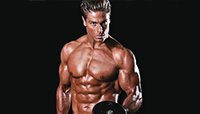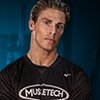Building muscle takes time and calories; that's just the way it is. But you can help the process along by choosing lifts that tap into the body's natural anabolic (tissue-building) hormonal system.
Lifts that use multiple joints and incorporate many muscle groups are the kings of muscle-building because they require a vast amount of muscle fibers to move the load. When such a big group of muscles is required to work at once, your body releases hormones like testosterone and growth hormone as a response to the stress.
I have a cache of great exercises that I continually return to when I want to increase muscle mass, but there are five in particular that always seem to be more effective than the others. I want to share them with you.
I'm also going to do you one better. I'll give you some of my secret training methods that will help you utilize these big, compound lifts for more efficient gains. Let's get growing!
1
THE SQUAT
The squat is the foundation of any good muscle-building program. It's an amazing lift not only because it hits huge muscles like the glutes, quads, and hamstrings, but because it requires almost every single muscle in your body—from your calves to your shoulders—to turn on.
I also love the squat because the movement pattern can be altered to fit each individual lifter. For example, beginners or those with mobility issues can start with the goblet squat, then progress through the front squat before starting the back squat.
Marc's Secret Method: Oxidative Sack Squats
Most people who want to put on size ignore their slow-twitch or Type I muscle fibers. These muscle fibers are important because they will help increase your muscle size and work capacity.
To train using the oxidative method, perform multiple sets of 10 reps at 30 percent of your one-rep max (1RM). The key is to perform the movement with 2-second lowering and lifting phases, without ever actually hitting the end of the range of motion where you can rest. After each set, you'll rest only 40 seconds.
I prefer to train this method using "sack squats." To do a sack squat, hold a dumbbell, kettlebell, or even barbell with help of a landmine in front of your chest. I like sack squats because they make it easier to maintain proper posture through the elongated sets.
2
THE DEADLIFT
The two exercises that incorporate the most muscle mass and the greatest number of joints are the squat and the deadlift. Just like the squat, the deadlift can be adapted to an individual's ability level and orthopedic restrictions. You can use trap bars, kettlebells, or adjust the starting position by placing the bar at a higher position on a rack.
You can also do either traditional or sumo deadlifts, as long as your back is in a safe position and you're using your hips to drive the movement. All in all, the deadlift is essential for those looking to build muscle.
Loading
Marc's Secret Method: Accommodating-Resistance Deadlifts
Accommodating resistance involves the use of bands or chains to change the load of an exercise. Most typically, adding a chain or band to the bar for a deadlift will increase the load on the bar as it is pulled higher off the ground.
Although the reward for performing deadlifts is increased size and strength, the exercise is not without risk. Picking up heavy weight from the floor can cause injury. By using bands or chains, the load is lightest when the lifter is at the bottom of the lift. The bottom of the deadlift is when a lifter is at his or her most vulnerable and mechanically disadvantaged position, so alleviating some of the weight from that position makes the lift safer.
3
THE PUSH-UP
Nothing against the bench press, but I feel that the push-up has done more for improving my size and definition. I think the efficacy of this exercise comes from the fact that push-ups can be performed for high volumes, and require more stabilization from your legs and core than the bench press. Furthermore, push-ups allow the scapula to move freely, which is healthier for your shoulders than the scapula-restricted exercises you do on a bench.
The downside of the push-up is that it is not as easily loaded as other chest exercises. But, with some chains, a weight vest, or a weight plate, push-ups can be loaded effectively.
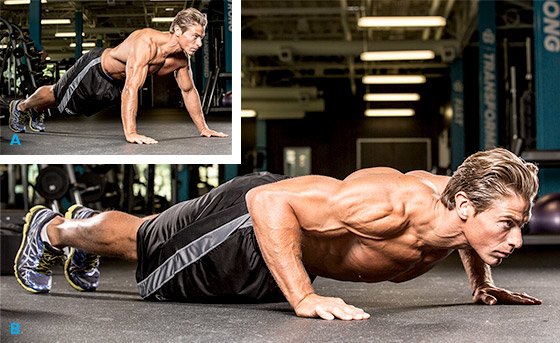
Push-Up
Marc's Secret Method: 50-Repetition Push-Up
High-repetition finishers are a great way to damage your muscles (in a good way) at the end of a workout. I love ending a chest-building workout with one huge set of push-ups to kick muscle-building into high gear.
If you decide to make this 50-rep finisher part of your workout, be cautious not to let your core fail before your chest does. If you feel your core start to fail, you may have to swallow your pride and place your hands on a box or bench to maintain proper technique.
4
THE REVERSE LUNGE
There is some debate about using unilateral (single-side) exercises to build muscle. Some say that unilateral training is less effective than bilateral training because a lifter can't use heavy weight and therefore can't induce the same hormonal response. However, there is one aspect of unilateral lifts that can be very beneficial to muscle-building: the accumulation of lactate. Too many people forget that lactate accumulation also increases anabolic-hormone release.
Single-leg exercises require twice the duration and effort of bilateral exercises. This high energy expenditure results in a large accumulation of lactate in the working muscles and throughout the body.
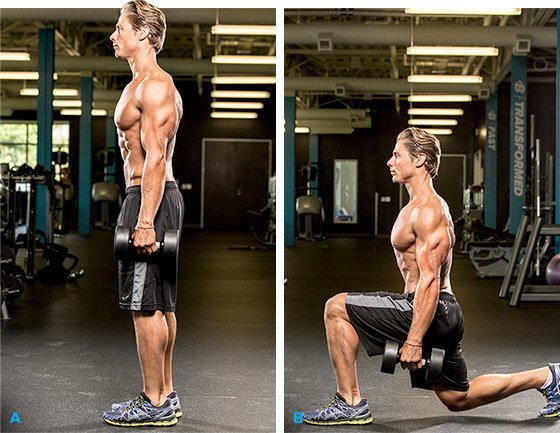
Reverse Lunge
Of all the single-leg exercises, barbell reverse lunges are my favorite, because doing them calls for the use of multiple joints and a lot of muscles. I also like them because they recruit your glutes and hamstrings as the prime movers. Your quads, which have a habit of taking over leg movements, are relegated to an assistant position.
You can perform a reverse lunge with dumbbells held at your sides, a barbell in the front rack position, or with a barbell on your back.
Marc's Secret Method: Deficit Reverse Lunges
I love using deficit training because it increases the range of motion of an exercise. This enhanced range of motion will increase the number of muscle fibers your body needs to do the movement.
Different parts of your muscles are used for varying joint angles, so changing the joint angle as you do during a deficit lift alters which muscle fibers are utilized. Deficit lifts also increase the time your muscles are under tension.
Until you're comfortable doing the movement, the deficit doesn't have to be very big. Start by stepping off a platform that is 3-6 inches from the ground.
5
SUSPENSION ROWS
Similar to the push-up, I prefer suspension rows to machine or dumbbell rows because they require stabilization from your core and lower-body muscles. The handles of the suspension system also allow for various hand positions, which make the exercise easier on the shoulder joint.
If your body weight isn't enough, increase the load by elevating your feet or using a weight vest, chains, or weight plates.
Marc's Secret Method: Paused Suspension Row
I think every pull, whether it's a chin-up or a row, should be paused. Without a squeeze at the top of a pull, you can neglect some very important muscles. The rhomboids and lower trapezius are only fully recruited during this last inch or so of movement, so pausing will improve their size and strength.
Paused pulls will also improve your posture—something we can all work on!

Recommended For You
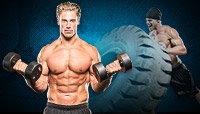
AMP: Marc Megna's 8-Week Aesthetics Meets Performance Trainer
The 8-week AMP program will help you perform like a pro and look even better. It's the ultimate combination of aesthetics and performance. Get amped to reach your physical peak.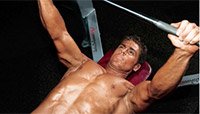
Working Class Man: Marc Megna Workout
There are a million reasons why Muscletech performancecoach Marc Megna shouldn't be living his dreams. But
they're not stopping him.
